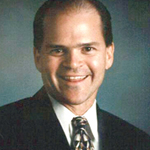Brain Injury Patients Are Given New Outlook
Can you read and understand the words on this page?
For some people, simply reading this article, the morning newspaper or their mail is a struggle.
That is true for one 65-year-old patient who experienced doubled vision after suffering a stroke in March.
While doctors treat the major symptoms of a stroke, problems with a patient’s vision are often overlooked, according to Dr. Rick Graebe, a behavioral optometrist in Versailles.
This is why Dr. Graebe uses Vision Therapy – a kind of a physical therapy for the eyes, mind and body – to treat many of his patients.
Often when we think of vision, we concentrate only on the eyes, but our visual systems involve much more.
The eyes work as a pathway that transmits images into the brain, which then interprets these images.
For the 65-year-old stroke patient, his eyes no longer worked in tandem, so his brain received overlapping images.
After an exam, Dr. Graebe offered a simple, short-term technique that would allow the patient to perform daily activities such as reading the newspaper and watching TV.
Actually, Dr. Graebe offered a sock.
Cut the toe off a small sock and place it over one lens of a pair of glasses, and, voila, with only one eye working, double vision disappeared.
Dr. Graebe’s long-term treatment for patients with brain trauma and stroke involves a systematic therapeutic approach including a series of exercises that retrain the eyes so they work together.
Recently, at a brain injury conference for the military at Fort Campbell in Kentucky, Dr. Graebe made a presentation on Vision Therapy.
After listening to his presentation, doctors at the conference encouraged Dr. Graebe to continue practicing Vision Therapy on brain trauma patients.
Although the focus of Dr. Graebe’s practice is children, approximately 20% of his patients have suffered a brain injury or stroke. He is at the forefront in the field among Kentucky optometrists.
Said Dr. Graebe: “I have a great staff and no optometrists in the state are doing more with brain injury patients than our practice.”

